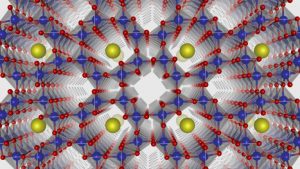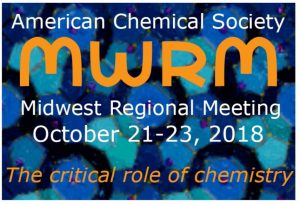-
The Perfect Pair?
-
Exciting Electrochemistry at MRS Boston
The upcoming Fall MRS Meeting in Boston will certainly not disappoint the electrochemical science crowd. It is exciting to see how extensive the use of electrochemistry has become for the materials sciences areas, namely those in energy transfer, storage, and conversion and in materials characterization and production.
Read More -
New Electrochemical Paradigms – What are you Researching?
The electrochemical scientists at Pine Research, while perhaps a bit biased, find electrochemsitry to be one of the most progressive and popular areas of materials engineering and analytical science. On occasion, we hear the phrase, “haven’t you discovered all there is to know about electrochemistry back in the 1960’s?” Indeed, some may not be aware of the recent renaissance of electrochemical science in the past decade. As the world demands high capacity and high-efficiency power systems (batteries, solar cells/photovoltaics, fuel cells, artificial photosynthesis, etc.) that are as sustainable and green as possible, the modern scientist who may not have been aware of electroanalytical chemistry are now finding it an essential component of their research program.

Crystal structure of alpha manganese oxide, studied for the new Unified Electrochemical Band-Diagram Framework (UEB) model (credit: Argonne National Laboratory).
A recent article in ScienceDaily is quite intriguing [1]. In it, the author describes that existing understanding of complex electrochemical systems relies on solid mathematical models; yet, these models do not provide a comprehensive understanding commonly observed behavior in electrochemical systems. Namely, in semiconductor applications (e.g., photoelectrochemistry and supercapacitors), the existing electrochemical models fail to explain complex mechanisms of the materials used, which have unique properties not captured by existing models. Researchers at Argonne National Laboratory have published an article describing a new model for understanding the materials used in electrochemical systems: The Unified Electrochemical Band Diagram Framework, published in the Advanced Functional Materials [2].

Visit Pine Research at the 2018 Midwest Regional ACS Meeting at Iowa State University in Ames, IA from 21 – 23 October 2018!
At Pine Research, we are eager to learn about your new discoveries. How has electrochemistry shaped and informed your research? What accomplishments in the field have you made? Come tell us all about it! We will be exhibiting at the upcoming Midwest Regional ACS Meeting at Iowa State University in Ames, Iowa (October 21 – 23, 2018). Share your research with us and learn about our products that might support your electrochemical research. We will have our new WaveDriver 200 Integrated Bipotentiostat (with electrochemical impedance spectroscopy, EIS) and the WaveVortex 10 Electrode Rotator for you to explore. See you soon – and enjoy the article!
References
[1] DOE/Argonne National Laboratory. “Electrochemistry: Greater than the sum of its parts.” ScienceDaily. www.sciencedaily.com/releases/2018/09/180918110958.htm (accessed October 15, 2018). [2] Young, M.J.; Holder, A.M.; Musgrave, C.B. The Unified Electrochemical Band Diagram Framework: Understanding the Driving Forces of Materials Electrochemistry. Advanced Functional Materials, 2018, 1803439. (DOI: 10.1002/adfm.201803439) Read More -
Pine Research Partnership with Equilabrium
From humble beginnings as “the electrode rotator company,” Pine Research has considerably grown over the last decade. In this time, Pine Research has expanded their product line, adding research grade EIS-capable potentiostats (WaveDriver 200), advanced and more cost-effective electrode rotators (WaveVortex 10), integrated spectroelectrochemical analysis systems (based on the Honeycomb spectroelectrochemical cell), and a large array of applications-oriented electrochemical cells. Our European customers have also grown over time and while we enjoy traveling to Europe to attend conferences and visit customer labs, we are not able to be as present as we would like to be. Further, European customers have been increasingly asking for a local representative.
Read More -
Can electrochemistry help the BRAIN Initiative?
The 256th ACS Fall National Meeting in Boston, MA is fast approaching. This year’s theme is Nanoscience, Nanotechnology & Beyond. The Kavli Lectures will feature Dr. Jill Millstone of the University of Pittsburgh presenting Metal-ligand chemistry in nanoparticle synthesis and performance and Dr. Harry Atwater of the California Institute of Technology presenting Light as Fuel. In addition, the Kavli Foundation is sponsoring a two-part symposia on the BRAIN Initiative on Tuesday August 21th. A morning session on Nanoscience & Nanotechnology in Neuroscience & the BRAIN Initiative organized by Dr. Anne Andrews, UCLA and an afternoon session on The Role of the Chemical Sciences in Brain Research & the BRAIN Initiative organized by Dr. Jonathan Sweedler, University of Illinois.
Read More






